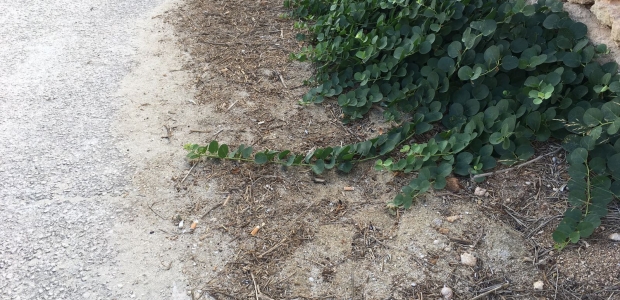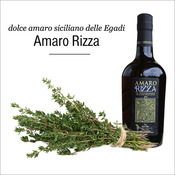Languages
Caper, what a caper!
An unexpectedly beautiful flower
After several attempts I managed to do take root, in the Po valley, some seedlings of capers on the sunniest wall of my house. The reason? I'm in love with the elegant, yet delicate, blossoming caper flower.
Walking around the island and seeing the extraordinary presence of these perennial plants makes me smile at my botanical efforts. They grow luxuriant and spontaneous in the most unlikely places, as a household crack, on the top of limestone blocks in abandoned quarries and clinging on the rocks overlooking the sea. They do not need soil. With their rounded leaves they adorn the stone walls, become soft carpets to lay the bikes onto, they boldly stretch out theirbranches toward the road surface regardless of traffic, keep an eye on the monk seal arrival in Marettimo caves.
Capers branches boldly protrude toward the road surface regardless of the traffic
Finding them at the end of summer is difficult but not impossible.
I wander around Favignana looking for the pleasant flower: four white petals and a large number of exquisite pink rosettes reminding me of the clump of a crowned crane.
In the area of Scalo Cavallo I come across some capers, still closed buds containing the flower.
"Now these are no longer good, they have the worms", says an island woman.
The caper is collected and stored since thousandsofyears and it is preserved first under salt and then under vinegar; it is used in gastronomy for its aromatic properties to flavor food.
If the flower is not picked, matures in a fruit called " cucuncio" due to the shape of a small pear with a long petiole, it contains many seeds which once scattered by the wind will spawn other capers.
The under vinegar cucuncio is an excellent low calories aperitif.
The kind of capers growing at Egadi is the thornless one and it could not be different, it reflects the spirit of welcome of the inhabitants.
In May, when the flowering is more luxuriant, it is a habit for the inhabitants of Marettimo to go, in Cala Bianca where the plants are more accessible. The harvesting, however, is only enough for domestic consumption. Believe me, it's worthwhile to anticipate the holiday on the tourist season in order to see the unexpected beauty of these flowers and who knows if you can bring some of them home.
"They're doing better here, it's the sea," the woman says while we talk about harvest.
I greatly appreciated the honesty of traders who do not push as islanders the products for sale, on the contrary they are critical of those who are not so transparent.
They inform the tourist that there is no laboratory for processing and packaging on the Egadi, the origin of these products is however from regional neighboring areas using Trapanese salt.
When you exclaim or hear "Capers!" think of the Egadi.

















